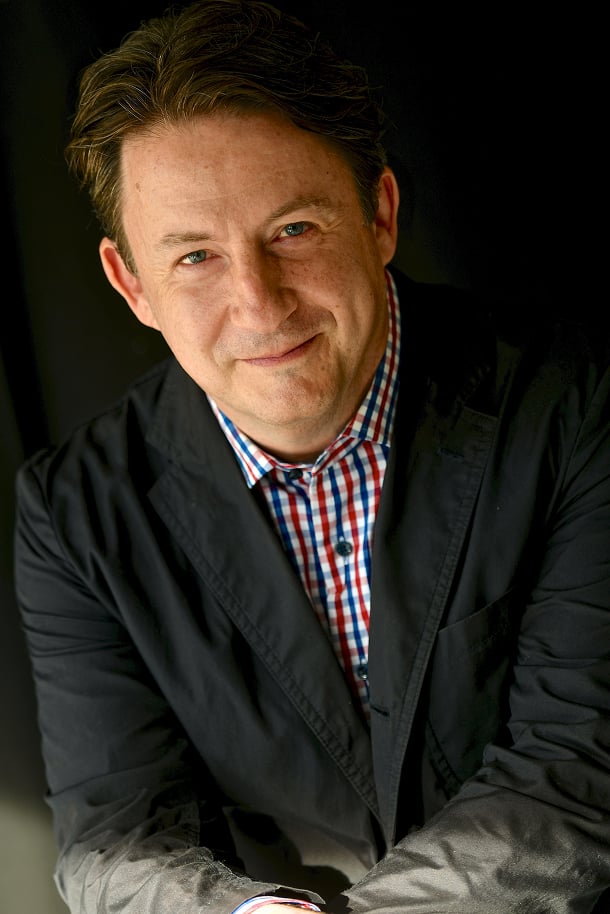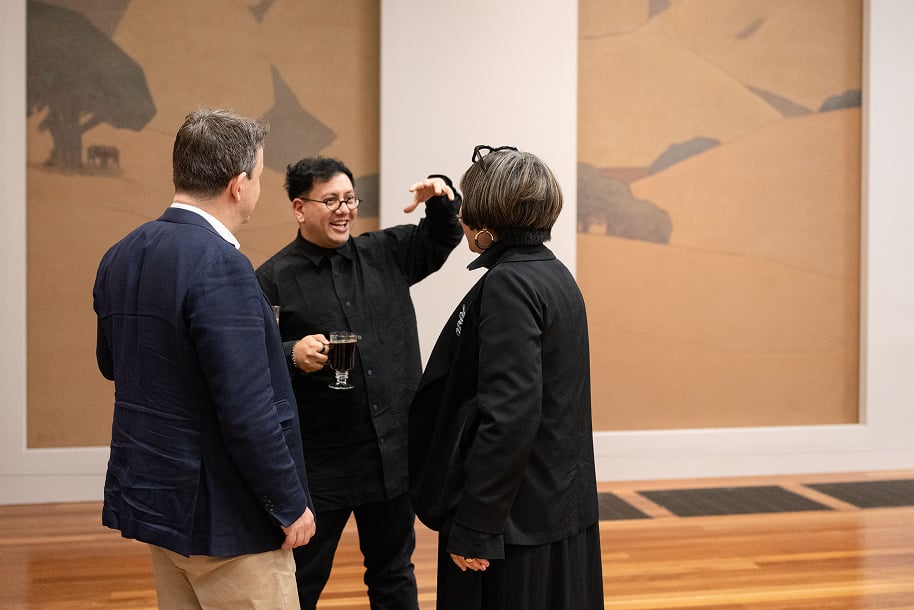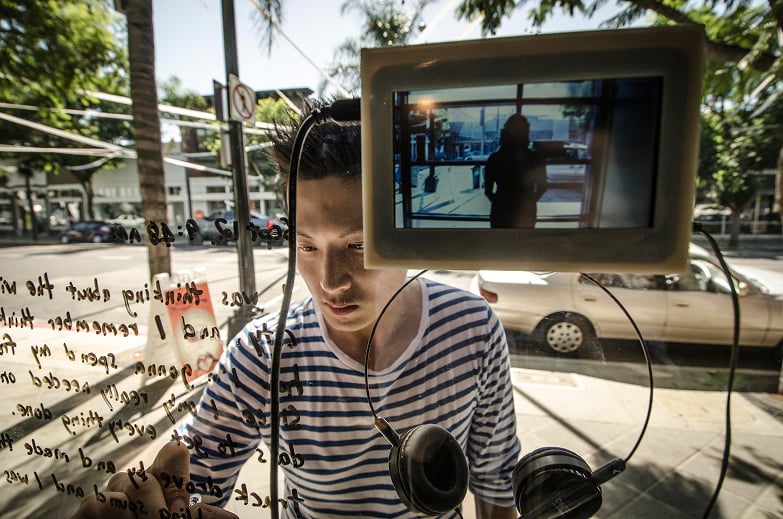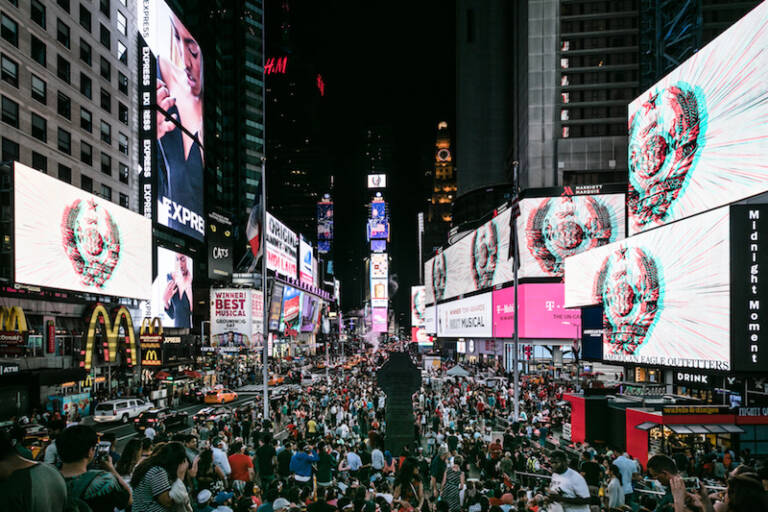
Photography by PATRICE CASANOVA

Photography by GARY SEXTON; image courtesy of the FINE ARTS MUSEUMS OF SAN FRANCISCO

Internationally renowned cultural strategist and journalist András Szántó has built a distinguished career advising leading universities, museums, and corporations on cultural enrichment and strategy, with a particular focus on the evolving power of culture and storytelling in shaping public imagination. His work spans a wide spectrum of the cultural landscape, shaping programmes and initiatives that define 21st-century engagement with the arts. Szántó’s writing has appeared in The New York Times, The Los Angeles Times, and The Wall Street Journal, alongside his acclaimed The Future Museum book series. He also leads journalism and writing programmes at prominent academic and cultural institutions. This fall, he continues the conversation with the release of his new book, The Future of the Art World (out November 4)—a visionary exploration of how creativity, institutions, and audiences will redefine culture in the years ahead.
As an advisor, Szántó has directed the Metropolitan Museum of Art’s Global Museum Leaders Colloquium and regularly moderates discussions at Art Basel. He has also launched forward-looking initiatives such as The Museums of Tomorrow Roundtable, in collaboration with the Fine Arts Museums of San Francisco.
In conversation with hube, Szántó shares his perspectives, ambitions, and concerns about the evolving role of cultural institutions in a rapidly changing world.
hube: You originally come from a background in sociology. What first drew you to that field, and how did those early academic interests evolve into the multifaceted cultural consultancy career you’ve built today?
András Szántó: My education started in Hungary, where sociologists were seen a bit like lawyers in America. A sociology degree meant you could enter public life or become an expert in many different areas. The first democratic parliament after 1989 had quite a few sociologists. When I came to graduate school in New York, it wasn’t with the expectation that I would have an ivory tower career. And a background in sociology has really helped my consulting life. It gives you analytical skills, empathy, the ability to view things from different points of view, and an instinctive way of seeing the world as a set of organisational and institutional processes. That’s helpful to consulting, of course. That career, however, grew gradually and intuitively. I don’t think anyone in my generation started out by thinking, ‘One day I will be a cultural strategy consultant.’
hube: Why do you think cultural storytelling has become so important for brands today? What deeper value does it bring beyond traditional marketing?
ASz: Because brands, in and of themselves, have no meaning. They acquire meaning—they need to be filled with it. And cultural storytelling, with its vast range of possibilities, allows you to create nuanced meanings and narratives around almost any brand. What’s the story you want to tell? Art can help tell almost any story—and it can do so in a way that feels authentic (sometimes aspirational), infused with the highest levels of creativity, and often connected to special venues where a brand’s audience is already present.
hube: In an era marked by growing political instability and polarization, what role do you believe museums and cultural institutions should play? Are they neutral spaces for reflection, or should they take a more active stance?
ASz: Museums play multiple roles. They mean different things to different people—and they may serve a different purpose for you at 10 a.m. than they do at 6 p.m. Museums are certainly vehicles for self-understanding and a sense of community belonging, and they can offer refuge and solace during difficult times. At their best, I think, museums remind us that an entire society can coexist—and that social divisions can be bridged through shared experiences.
There is no such thing as a neutral space for reflection. But the museum must also recognise that it welcomes people with a wide range of perspectives. In a polarised society, finding that balance becomes even more difficult.
hube: In your opinion, what motivates brands like BMW or Audemars Piguet to invest in long-term cultural initiatives rather than short-term sponsorships or ads?
ASz: You’re making an assumption that it’s typical for brands to invest in long-term, strategic cultural initiatives. If only that were the case. The vast majority of arts-related activities are one-offs—and often quite superficial: an artist creates a version of the product, and there’s a big party.
BMW and Audemars Piguet stand out for their long-term approach—in the former’s case, a half-century of cultural engagement; in the latter’s, about a decade of thoughtful, deeply involved partnerships with the art world that bring real value to the cultural ecosystem. I’ve had the privilege of working with both, and I can only hope that more brands follow their lead.
hube: What’s the biggest misconception brands have when they first approach cultural collaborations?
ASz: The sentence I hear most often is: “What we make is also art.” True—some of what these companies create is indeed a remarkable feat of engineering, imagination, and craftsmanship—and, frankly, it often resonates more broadly within contemporary culture than the work of many artists or arts institutions. But that doesn’t make your product art.
What you should aim for is a deep and authentic connection between what you and your brand do, and what artists are doing. It’s important to understand that these are two distinct lanes. They can intersect, but our society has set fairly robust parameters around what is considered art—and what is not. Once this is clearly understood, it becomes much easier to approach the interaction as a kind of dialogue.

